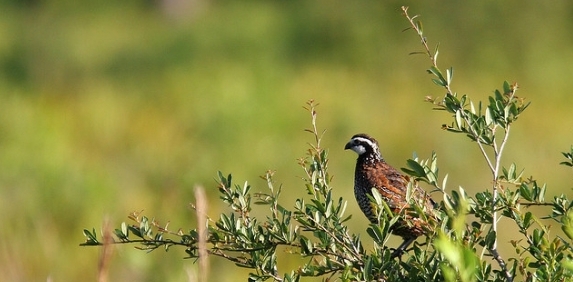The plight of the bobwhite quail has been well documented. It seems the species can not get out of the way of its own demise. Everything is stacked against it. Habitat is disappearing and rainfall is sparse. The recent droughts have amplified the decline of quail in the state, even in the traditional strongholds. Quail experts have admitted they don’t exactly know what the limiting factors may be. Now, even Texas Parks and Wildlife Department has said that quail hunting itself is not impacting the population. Will quail populations and hunting persist in Texas?
From the pen of Carter P. Smith
Executive Director of Texas Parks & Wildlife Department“For most of us, the quail hunting season started and ended with more of a whimper than a bang this year. Save and except for a few pockets of sandy country in deep South Texas, much of the state’s bobwhite quail range was bereft of the very thing hunters and their dogs desired — quail. For all who cherish the sound of a rooster’s penetrating “bob-white” cry on a crisp winter morning and the sight of an exploding covey rise over a good point, that’s a real shame.
Another casualty of the now famous, or infamous, dry spell of 2011, statewide bobwhite quail populations are estimated by TPWD biologists to be as low as they have been in decades. Regrettably, it is another step backward for a prized game bird that has seen its population decline steadily across its range from New Jersey to the southern Great Plains. The bird’s predicament has been the subject of considerable discussion — and debate, I might add — in chat rooms, emails and conference rooms and at coffee shops and kitchen tables from Pampa to Albany to Coleman to Kingsville.
Quail hunters are anything but shy and retiring when it comes to their favorite game bird, and this year has been no exception. That’s a good thing, because let me assure you, complacency is not an option. So, how did we get to where we are today?
It is important to note that Texas is situated at the western terminus of the bird’s range. Quail populations, like other species of fish and wildlife, are more susceptible to the annual boom and bust cycles of nature when they’re at the margins. In any one year, assuming suitable habitat exists in sufficient quality and quantity, most population variability in bobwhite populations can be explained by the timing and amount of rainfall. This axiom holds true for much of the state, except for the eastern portion, where rainfall is not a limiting factor but suitable available habitat is.
That’s not to say that suitable habitat is not a limiting factor elsewhere in Texas. The pernicious effects of widespread quail habitat fragmentation, proliferation of exotic and invasive grasses and conversion of native habitat to improved pasture are all taking their toll.
And, as hard as it is to imagine in a state revered for its wide-open spaces and vast places, scale may be a problem as well. Researchers at the Caesar Kleberg Wildlife Research Institute have suggested that in order to maintain sustainable populations of bobwhite quail, we may need to maintain large blocks of contiguous habitat to the tune of hundreds of thousands of acres. Such is certainly true of other grassland bird species, including upland game birds like the lesser prairie-chicken, which is fighting an uphill battle to hang on in the wake of significant long-term habitat changes across its range.
Some quail enthusiasts and researchers, while acknowledging the unavoidable weather and quail habitat parts of the quail equation, have suggested that there may be other insidious forces to blame. Exploding feral hog populations or a cryptic disease or endo-parasite may also be negatively affecting quail populations. Or, perhaps just as likely, it may be a combination of “all of the above.”
If you are worried about the effects of quail hunting, let me quickly take that off your worry list. There are simply far too few quail hunters to make an impact at a statewide, population-level scale.
While hunters are not the cause of this decline, they absolutely will be a big part of the solution. Thanks to their investments in the upland game bird stamp, which funds the important work of wildlife biologists across the state, as well as their support of groups like the Quail Coalition and the efforts of research institutions like the Kleberg institute, the Rolling Plains Quail Research Ranch and Quail-Tech, hunters will help us get to the bottom of this most vexing of wildlife concerns.
I am grateful that hunters and anglers care so passionately for our wild things and wild places. We need them now more than ever.”
